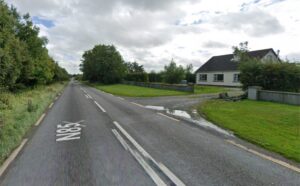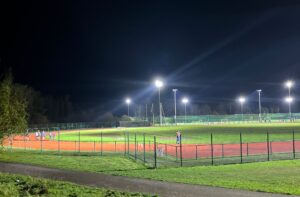This week’s article from Mycctv.ie goes through the role of video surveillance in public spaces.
In an era where safety concerns are paramount, video surveillance has emerged as an indispensable tool for ensuring security in public spaces. From bustling city streets to serene parks, surveillance cameras serve as vigilant guardians, deterring crime and enhancing safety for residents and visitors alike. In this article, we explore the myriad benefits of video surveillance in public spaces, highlighting its role in crime prevention, emergency response, and community policing.
Crime Prevention and Deterrence:
The presence of surveillance cameras in public spaces acts as a powerful deterrent against criminal activities. Research has consistently shown that the visibility of cameras reduces the likelihood of crimes such as theft, vandalism, and assault. Criminals are less likely to engage in unlawful behaviour when they know they are being monitored, leading to safer environments for everyone.
Moreover, video surveillance provides valuable evidence for law enforcement agencies in the investigation and prosecution of crimes. By capturing footage of criminal incidents, surveillance cameras help authorities identify perpetrators, corroborate witness testimonies, and secure convictions in court. This not only helps deliver justice to victims but also sends a clear message to potential wrongdoers that criminal behaviour will not be tolerated.
Creating Secure Cities: The Global Impact of Video Surveillance Projects:
In an increasingly urbanized world, ensuring the safety and security of citizens is a top priority for governments and municipalities worldwide. To address this challenge, many cities have implemented comprehensive security initiatives, with video surveillance playing a central role in these efforts. From bustling metropolises to smaller urban centres, the deployment of surveillance cameras has become synonymous with the concept of a “Safe City.” In this article, we explore the global impact of video surveillance projects within the framework of “Safe City” initiatives.
The concept of Safe City projects emerged in response to the growing complexities of urban security challenges. Rapid urbanization, population growth, and increasing crime rates necessitated innovative approaches to maintain law and order, protect citizens, and safeguard critical infrastructure. Safe City projects aim to leverage technology and data-driven solutions to create safer and more resilient urban environments.
Video surveillance plays a pivotal role in Safe City initiatives, providing authorities with real-time monitoring capabilities, crime detection tools, and situational awareness to respond effectively to security threats. By deploying surveillance cameras strategically across key locations such as transportation hubs, public squares, and commercial districts, cities can deter criminal activities, detect incidents promptly, and facilitate swift emergency responses.
Global Examples of Video Surveillance in Safe Cities:
Cities around the world have embraced video surveillance as a cornerstone of their Safe City strategies, implementing innovative projects to enhance public safety and security. One notable example is the “CitySafe” initiative in London, United Kingdom, which involves the deployment of a vast network of surveillance cameras equipped with advanced analytics capabilities. These cameras enable authorities to monitor crowds, detect suspicious behaviour, and respond to emergencies in real-time, contributing to a significant reduction in crime rates across the city.
In Singapore, the “Safe City Test Bed” project utilizes video analytics and artificial intelligence to enhance security in public spaces. Surveillance cameras equipped with facial recognition technology and behavioural analytics algorithms enable authorities to identify potential security threats and track suspicious individuals in crowded areas such as shopping malls and transportation hubs. This proactive approach to security has bolstered public confidence and contributed to Singapore’s reputation as one of the safest cities in the world.
In Latin America, cities like Bogotá, Colombia, have implemented comprehensive video surveillance projects to combat crime and improve public safety. The “Bogotá Segura” initiative involves the installation of surveillance cameras in high-crime areas, complemented by community engagement programs and enhanced law enforcement efforts. The integration of video surveillance with other technologies such as gunshot detection systems and license plate recognition has led to significant reductions in crime rates and enhanced the overall quality of life for residents.
As technology continues to evolve, the future of video surveillance in Safe City projects holds great promise for enhancing urban security and resilience. Advancements in artificial intelligence, machine learning, and edge computing are revolutionizing surveillance capabilities, enabling cities to harness the power of data analytics and predictive modelling to anticipate security threats and prevent incidents before they occur.
Enhanced Situational Awareness:
Surveillance cameras play a crucial role in enhancing situational awareness and enabling proactive responses to security threats. In crowded public spaces such as transportation hubs and shopping centres, cameras provide real-time monitoring of activities, allowing security personnel to identify and address potential risks promptly. This proactive approach to security minimizes the likelihood of incidents and ensures the safety of individuals within these environments.
Furthermore, video surveillance aids in the management of public events and gatherings by providing organizers with valuable insights into crowd dynamics and behaviour. By monitoring crowd movements and identifying potential safety hazards, surveillance cameras help ensure the smooth and safe conduct of events, festivals, and celebrations.
Support for Emergency Response:
In emergency situations such as accidents, natural disasters, or acts of terrorism, video surveillance plays a critical role in supporting emergency response efforts. Surveillance cameras provide real-time situational awareness to first responders, enabling them to assess the scope of the emergency and allocate resources effectively. This rapid response can help mitigate the impact of emergencies and save lives.
Moreover, surveillance footage serves as valuable documentation for post-incident analysis and investigation. By capturing the sequence of events leading up to an emergency, cameras provide valuable insights into the causes and contributing factors, enabling authorities to learn from the incident and implement preventive measures for the future.
Community Policing and Public Trust:
Video surveillance fosters a sense of security and reassurance among members of the community, enhancing trust in law enforcement agencies and local authorities. When individuals feel safe in their surroundings, they are more likely to engage in community activities, support local businesses, and contribute to the overall well-being of the neighbourhood.
Furthermore, surveillance cameras serve as force multipliers for law enforcement agencies, allowing them to extend their reach and effectiveness in crime prevention and detection. By leveraging technology to augment traditional policing methods, authorities can optimize resource allocation and focus their efforts on areas with the highest security risks.
In conclusion, video surveillance plays a crucial role in ensuring safety and security in public spaces, offering numerous benefits in terms of crime prevention, emergency response, and community policing. By leveraging the power of surveillance technology, authorities can create safer environments for residents and visitors, fostering a sense of security and well-being within the community.











